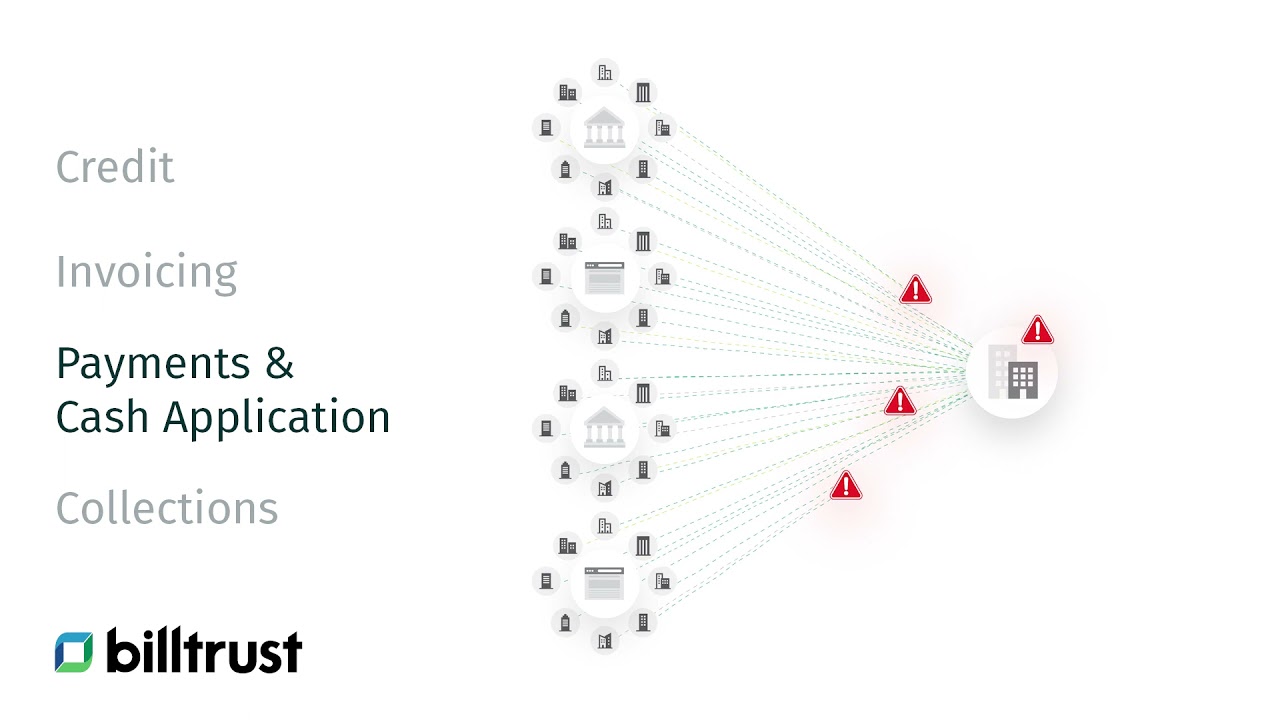The construction industry is one of the last remaining industries to adopt automated accounts receivable (AR) software. Why? Because some firms are often family-owned and operated. In addition, a certain level of trust goes into these businesses, and owners are hesitant to adopt new technologies that could jeopardize that trust.
With the growth of construction accounts receivable software, however, there are more options than ever before for construction companies looking to improve their operations.
Below, we’ll explore the construction accounts receivable (AR) process, some of the benefits and challenges of construction accounts receivable software that have kept this industry from adopting this technology and the future of accounts receivable automation in the construction industry.

What is the process of accounts receivable
Accounts receivable is the process of tracking and managing customer payments and a critical part of a company's cash flow. It's important keep track of how much money is coming in and when it is expected to be paid. To do this, companies typically have an accounts receivable department that handles customer invoices and payments.
In the construction industry, accounts receivable (AR) is the money owed to a firm by its customers for products or services that have been delivered but not yet paid for. The project manager or accounting department typically manages the process.
How does the AR process work?
When a customer pays their invoice, the money is deposited into the company's bank account, and the accounts receivable department records the payment. If a customer does not pay their invoice on time, the accounts receivable department will inform them of the outstanding balance.
The accounts receivable system tracks all invoices and payments and provides a running balance of amounts owed to the company. It goes without saying, then, that accounts receivable is a vital part of financial management, as it helps to ensure that all payments are received promptly. Accounts receivable can become a major financial burden for a construction company without proper management.
The use of accounts receivable software in construction
Accounts receivable (AR) software is a tool that construction companies can use to manage and track invoices and payments. State-of-the-art AR software can help construction companies keep tabs on their receivables and outstanding payments. In addition, accounts receivable software can also help construction companies automate their invoicing and payment processing. This can save time and money, as well as improve customer satisfaction.
Is AR software for everyone?
It’s a valuable tool for construction companies of all sizes. It can help them improve their cash flow management and better manage their finances. Selecting one specific to the construction industry is important when choosing an accounts receivable solution. This will ensure that the software meets the unique needs of construction companies.
There are many accounts receivable (AR) software features for construction companies to automate and keep track of invoicing and payments. This can be a huge time-saver for your construction business, as it can handle a lot of manual billing processes for you. In addition, it can also help you keep track of payments, so you can follow up with customers who are behind on their payments.
Customers who are behind on their payments can often be a big source of stress for construction businesses, so tracking and managing these accounts using the software can help. Overall, using AR software in your construction business can help improve your bottom line as digitally invoicing makes it easier to get paid on time.

The benefits of accounts receivable software
Accounts receivable software can be a game-changer for construction businesses. With so much to gain, it's no wonder that more and more construction businesses are turning to AR software to help them manage their finances. In fact, it provides many AR benefits for businesses in the construction industry:
- By automating invoicing and payments, businesses can reduce the time spent chasing payments.
- By automating manual tasks and providing more insight into customer behavior, AR software can help businesses improve their cash flow and get paid faster.
- Software can help businesses avoid late fees and interest charges by providing reminders when invoices are due.
- Automation can also help to improve relationships with customers and suppliers. Businesses can avoid misunderstandings and build stronger relationships with their trading partners by streamlining communication and providing a clear view of outstanding invoices.
- In addition, AR solutions can help businesses better manage their resources and improve their bottom line. By reducing the time spent on administrative tasks, businesses can free up staff to focus on revenue-generating activities. As a result, construction businesses that adopt accounts receivable software can see a significant return on investment.
If you're in construction, you know that accounts receivable (AR) can often be a big source of stress. After all, construction businesses often work with customers who may be behind on their payments. This can make it difficult to manage your finances and keep track of your receivables. However, their accounts receivable automation software is a solution that can help construction businesses to better manage their unique construction accounts receivable needs.
Download the ultimate guide to digital accounts receivable

The drawbacks of accounts receivable software
Getting paid can be a challenge when you’re in the construction industry. With so many moving parts and parties involved in a project, it’s not always easy to track who owes you money and when the payments are due. That’s where accounts receivable software comes in and can help you track invoices and payments to maintain your construction accounts receivables. It helps to streamline the invoicing and payments process for businesses. However, there are some potential drawbacks to using this type of software:
- It can be expensive to purchase and maintain.
- AR software requires training and ongoing support to use effectively.
- It’s only as good as the data that’s entered into it. If invoices or payments are not entered properly, the software may not provide accurate information. When invoices are set up incorrectly, the software can create more work for accounting staff as errors can be time-consuming.
- If the accounts receivable platform is not compatible with the company's other accounting software, it can create additional headaches for staff.
While receivables software can be a helpful tool for businesses, it is important to weigh the pros and cons before deciding. However, AR software can be a valuable tool for construction businesses despite its drawbacks. When used correctly, it can help construction businesses improve their cash flow because they get paid faster.
The future of accounts receivable software in construction
The construction industry is one of the most important industries in the world. It is responsible for constructing buildings, roads, bridges and other infrastructure. The construction industry is also a major contributor to the economy, accounting for billions of dollars in economic activity each year.
Despite its importance, the construction industry has been slow to adopt new technologies. However, this is beginning to change as more construction firms adopt account receivable (AR) software. Accounts receivable automation helps construction firms to manage their AR more efficiently.
The adoption of AR automation software in the construction industry is still in its early stages. However, several AR trends suggest that software will become increasingly popular in the years to come.
How so?
- First, construction firms are under increasing pressure to improve their cash flow. For instance, small construction firms may have difficulty getting paid promptly.
- Second, the construction industry is becoming more competitive, and construction firms are looking for an advantage.
- Finally, construction firms increasingly use mobile devices and cloud-based applications, making it easier to use AR software.
The bottom line?
The construction industry is ever-changing, so today's receivables software solutions might not be the best fit for tomorrow. As the industry evolves, it's important to stay ahead of the curve and choose an accounts receivable solution to scale your business.
One of the biggest trends in construction right now is the move toward more collaborative project management. In the past, construction firms often operated in silos, with separate teams working on different aspects of a project. This approach can lead to inefficiencies and miscommunications. Today, construction firms adopt more collaborative approaches that emphasize communication and cooperation.
As construction firms move toward more collaborative models, choosing the software that aligns with your specific construction accounts receivable needs is vital.
Wrapping up
There’s little doubt that accounts receivable software benefits construction firms, including improved customer service levels, reduced accounting errors and increased efficiency.
Nevertheless, there are also some drawbacks to using such software, including the cost of implementation and maintenance and the complexity of the systems. However, despite these drawbacks, the future of AR software in the construction industry looks promising.
Overall, receivables (AR) software is worth considering for construction firms. Automated systems can save businesses time and money while reducing accounting errors. As more construction firms become aware of the benefits of automating their AR processes and the needs and landscape of the construction industry evolve, the adoption of accounts receivable software will likely increase to maintain the pace of the industry.

